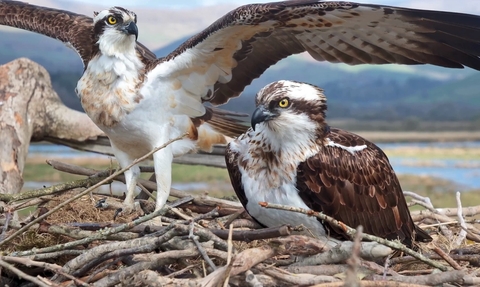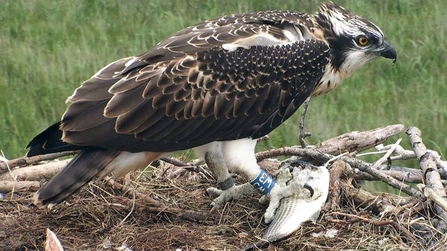
Osprey Basics
Ospreys (Pandion haliaetus) are large fish eating birds of prey. They are in a biological family of their own which means that they are not related hawks, eagles, falcons or other raptors. Ospreys are found on every continent of the world except for Antarctica. There are four subspecies of osprey, each found in a different geographical location, these are:
P. hailiaetus haliaetus - found across Europe, North Africa and Western, Central and Eastern Asia
P. haliaetus carolinensis - found in North America
P. haliaetus ridgwayi - found in the Caribbean
P. haliaetus cristatus - found in Australia
Ospreys are piscivorous, meaning they only eat fish, but they can eat lots of different types of fish from both fresh and salt water areas. , They have a number of specialist adaptations that help them catch their slippery prey, including zygodactyl or reversible outer toes to aid grip. Owls also have this special ability. Ospreys also have closable nostrils, nictitating membranes in their eyes and spiky spicules on their feet to help when they are fishing. Ospreys are diurnal which means they hunt in daylight.
Ospreys are dark brown on their backs and wings and white underneath. Their beaks are black and their legs are white. Male and females are similar in colouration, however, females are typically about 15% bigger than males. Adult ospreys weigh around 1.5kg and have a wingspan of up to 180cm. Ospreys reach sexual maturity at around three years old.
In the UK and Northern Europe Ospreys are migratory, they take advantage of the long hours of daylight and abundant fish supplies to breed between April and September each year. Most then migrate to Sub Saharan Africa to over winter in countries like The Gambia, Senegal and Guinea Bissau.

Brenig with a fish